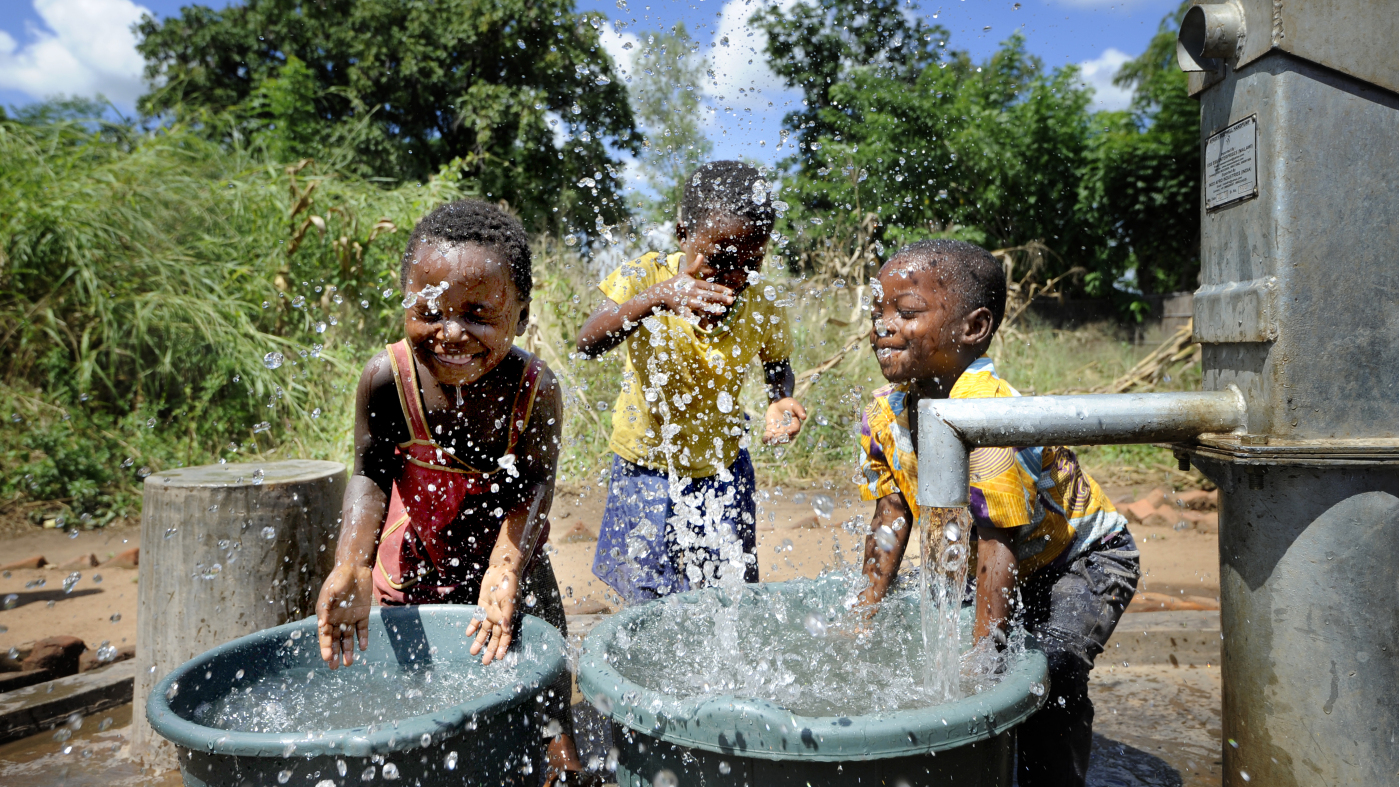Monthly Prayer: June 2024

Thank you to Father David Steward SJ for this month's reflection, focusing on water.
I mentioned to a friend that I’d been asked to write a wee reflection on water for SCIAF. My friend’s response was that, as a Scot, I’d be more familiar than most people with water, not least because we have so much of it either surrounding us or falling on us! We here seldom need to worry about having not enough water or having too much of it, although some of us have recently experienced dangerous flooding while, for our island communities, the waters are often too rough to risk travel. Yet we can’t live without water.
There’s much more to it, of course. Water is essential for human living and therefore has become a powerful symbol in our many human cultures over millennia. And as Christians, we know how strong a symbol water is for us, in several ways. We would likely think of our baptisms first and then we might remember how often water appears in Scriptural tradition.
The sea, in Old Testament times, was feared as dangerous. That’s why, in the earliest part of our Bible, we learn that “the Spirit of God hovered over the chaos” (Gen.1:2), bringing divine order and freedom from fear and danger. Yet the ocean is also a plentiful source of food and sustenance. This duality – water as both essential to life and a danger to it – is inherent throughout the Scriptures and in our human experience. But there is no equivalence for, from the very beginning, witness is given to God’s desire to overcome what endangers creation – including us. A little later in Genesis, for example, there is nothing ambiguous about how God, once having created and brought order to the turmoil, saw that it was all good. The rolling, stormy seas may have seemed to the Genesis writers to have symbolised a formless disordered void but divine Providence asserted itself. The clear message, from those earliest writers of Scripture, is that those who traverse the dangerous sea without faith risk submerging and drowning, which theologically stood for damnation. These biblical writers were not out to develop a theory of creation but to build a theology of divine grace and salvation.
While not forgetting water’s destructive power, our Scripture, in several ways, uses water as a symbol of God’s power. It appears as a sign of cleansing, for example in ceremonial washing rituals of the Old Testament (e.g., Exodus 30:18-21, Leviticus 16:4) and of life itself. “Living water” is regularly mentioned and is employed as a powerful, life-giving symbol by the prophet Ezekiel (Ez.47); without it, no living thing can live or survive. The story of the Flood, with its vivid detail (Gen.6-9), is not about God’s wanton destruction of creation but really indicates God’s desire to restore creation in all its goodness and beauty. What emerges from this wonderful, dramatic Hebrew myth? Nothing less than the Covenant that God offers to humanity.
Jesus knew all of this so well! He cherished and blessed the baptism that John ministered, not by words but by submitting to that baptism himself, even though he had no need of its cleansing power. In a beautiful moment of encounter with that thoughtful Samaritan woman at the well, in John’s Gospel, he spoke of “living water” and even identified Himself as such. She understood inwardly the real significance of the moment, even if she had no idea who he was, asking Jesus to give her that water that, as she realised, wells up to eternal life (4:14). Later in John’s Gospel (7:37-39), he repeats this statement of his identity, adding that it is the power of the Spirit working within him. And at the moment of his death on the Cross, water & blood gushed from Christ’s side. Our vivifying sacramental life in the church and our devotion to the Heart of Christ, flow from this saving moment and from it, we, too, draw life and strength.
Turn to our present day, now, in this moment of human history, where we recognise contemporary concerns that will become increasingly urgent. We learn from SCIAF that 1 in 10 of our brothers and sisters, that’s almost 800 million people, do not have access to clean water. Many can source only contaminated water which, rather than sustain life, causes suffering and death. Livestock and crops wither and die. One of the many horrors of the Gaza conflict has been the destruction of water supplies and of the energy sources needed to power essential filtration. We should by now be aware of how sea-levels are rising and global ice-caps diminishing. This is a devastating effect of anthropogenic climate change particularly on the world’s poorest (who did nothing to cause this). As sea levels rise, land is flooded, even lost, livelihoods and crops are at risk and people are forced to migrate. Elsewhere it’s the opposite as weather patterns become less predictable and formerly rich & fertile areas become arid deserts.
We must see these are matters of justice. Water conservation might have to become the “new normal” in some parts of our world; how will we guarantee justice for the least able and prevent the lack of water resources from becoming a cause of conflict? We can be agents of justice and advocates for those most affected. SCIAF and its partners can show us how. God’s dream, of alive and abundant creation, has not withered, even if things look parched in many places. We can help those rivers of living water to flow again, bringing life and dignity to those who thirst in so many ways.
Back to